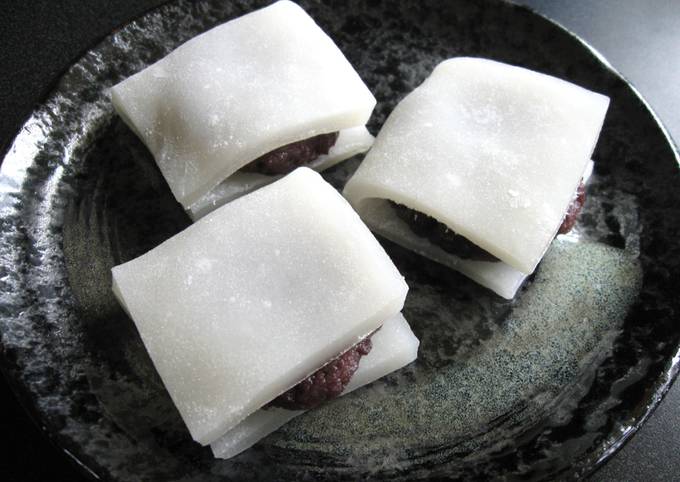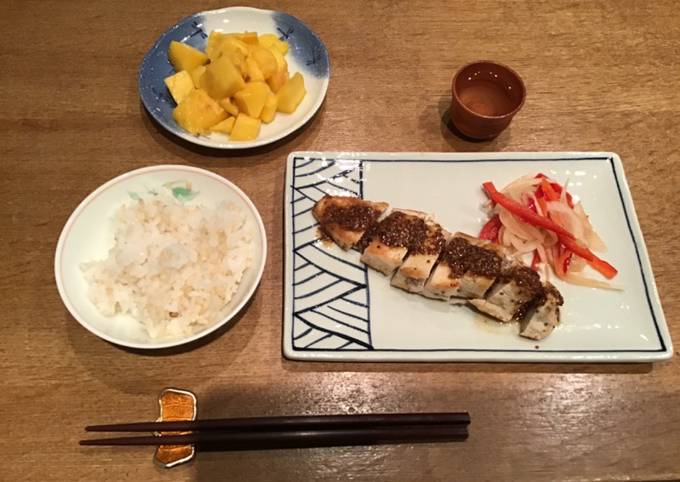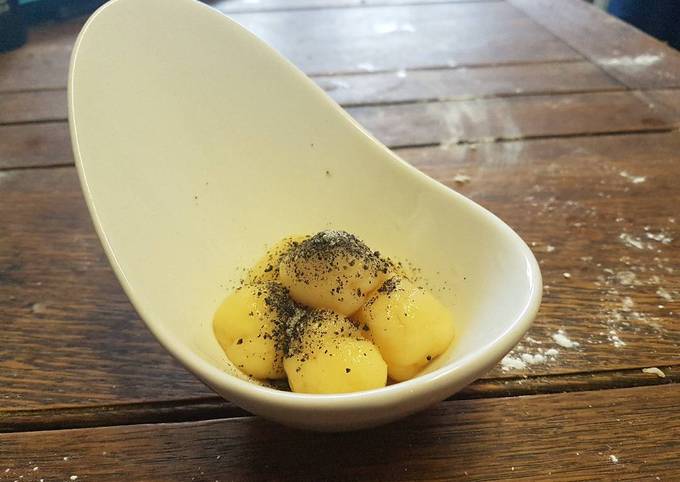
Hello everybody, it is John, welcome to our recipe site. Today, we’re going to make a distinctive dish, soft sweet mochi made with ‘shiratamako’ flour. It is one of my favorites food recipes. This time, I will make it a little bit unique. This will be really delicious.
Soft Sweet Mochi made with ‘Shiratamako’ Flour is one of the most well liked of recent trending meals in the world. It is simple, it’s fast, it tastes delicious. It’s appreciated by millions daily. They’re nice and they look wonderful. Soft Sweet Mochi made with ‘Shiratamako’ Flour is something that I’ve loved my entire life.
Soft Sweet Mochi made with 'Shiratamako' Flour Soft Sweet Mochi is called 'Gyūhi' (求肥) in Japan. It is a form of traditional Japanese sweet. Mochi is rubbery rice cake made with Glutinous Rice Flour, and it naturally turns hard over time. Place 'Shiratamako' Flour in a heat-proof mixing bowl, gradually add Warm Water, mixing well.
To begin with this recipe, we must first prepare a few ingredients. You can have soft sweet mochi made with ‘shiratamako’ flour using 6 ingredients and 7 steps. Here is how you can achieve it.
The ingredients needed to make Soft Sweet Mochi made with ‘Shiratamako’ Flour:
- Get 100 g ‘Shiratamako’ (Japanese Glutinous Rice Flour)
- Prepare 200 ml Warm Water
- Get 100 g Caster Sugar
- Prepare 1 pinch Salt
- Prepare Potato Starch Flour
- Make ready ‘Tsubu-an’ (Sweet Azuki Paste) (see recipe)
Add the sugar to the flour liquid and stir thoroughly. Shiratamako is a type of glutinous rice flour used to make many types of wagashi (traditional Japanese sweets). Shiratamako is made from mochigome, a variety of glutinous, short-grain rice from Japan. Also known as sticky rice or sweet rice, glutinous rice is gluten-free but clumps together in a way that's ideal for making rice dough.
Steps to make Soft Sweet Mochi made with ‘Shiratamako’ Flour:
- Spread plenty of Potato Starch on a chopping board (OR a tray), on which you will place cooked Mochi later. You would need extra Potato Starch.
- Place ‘Shiratamako’ Flour in a heat-proof mixing bowl, gradually add Warm Water, mixing well. Add Sugar and Salt, and mix well until smooth.
- Heat in the microwave for 40 seconds, take out and stir with a spatular, then heat 1-2 minutes or until cooked. *Note: When the colour becomes slightly transparent (not white), it is cooked.
- *Note: I used 1100W microwave. Depending on the power, alter the cooking time. You can steam the mixture in a large heat-proof bowl for 10 to 15 minutes.
- Clean the spatular with warm water, and use the wet spatular to stir the mixture very well. *Note: As the mixture is very sticky, wet the spatular with warm water when required.
- Using the wet spatular, take the thick and sticky ‘Mochi’ onto the prepared board. Sprinkle extra Potato Starch over the ‘Mochi’ as well. Use a rolling pin (OR your hands) to flatten and roll it out to a large oblong about 5-6mm thick.
- Remove excess Potato Starch from Mochi and cut into 5cm x 10cm oblongs. Place 1 tablespoonful of Tsubu-an (Sweet Azuki Paste) on each piece, then fold in half. *Note: This ‘Soft Sweet Mochi’ can be enjoyed as it is without Azuki Paste.
Shiratamako is made from mochigome, a variety of glutinous, short-grain rice from Japan. Also known as sticky rice or sweet rice, glutinous rice is gluten-free but clumps together in a way that's ideal for making rice dough. Dough made from Mochiko is not as fluffy and soft, with it having a more elastic and chewy mouthfeel. If you let mochiko dough sit out for too long as well, it dries out and hardens. Mix Mochiko and water in a glass (or other heat proof) bowl and mix well.
So that is going to wrap this up for this special food soft sweet mochi made with ‘shiratamako’ flour recipe. Thank you very much for reading. I am sure you will make this at home. There is gonna be more interesting food in home recipes coming up. Remember to save this page in your browser, and share it to your family, friends and colleague. Thank you for reading. Go on get cooking!

